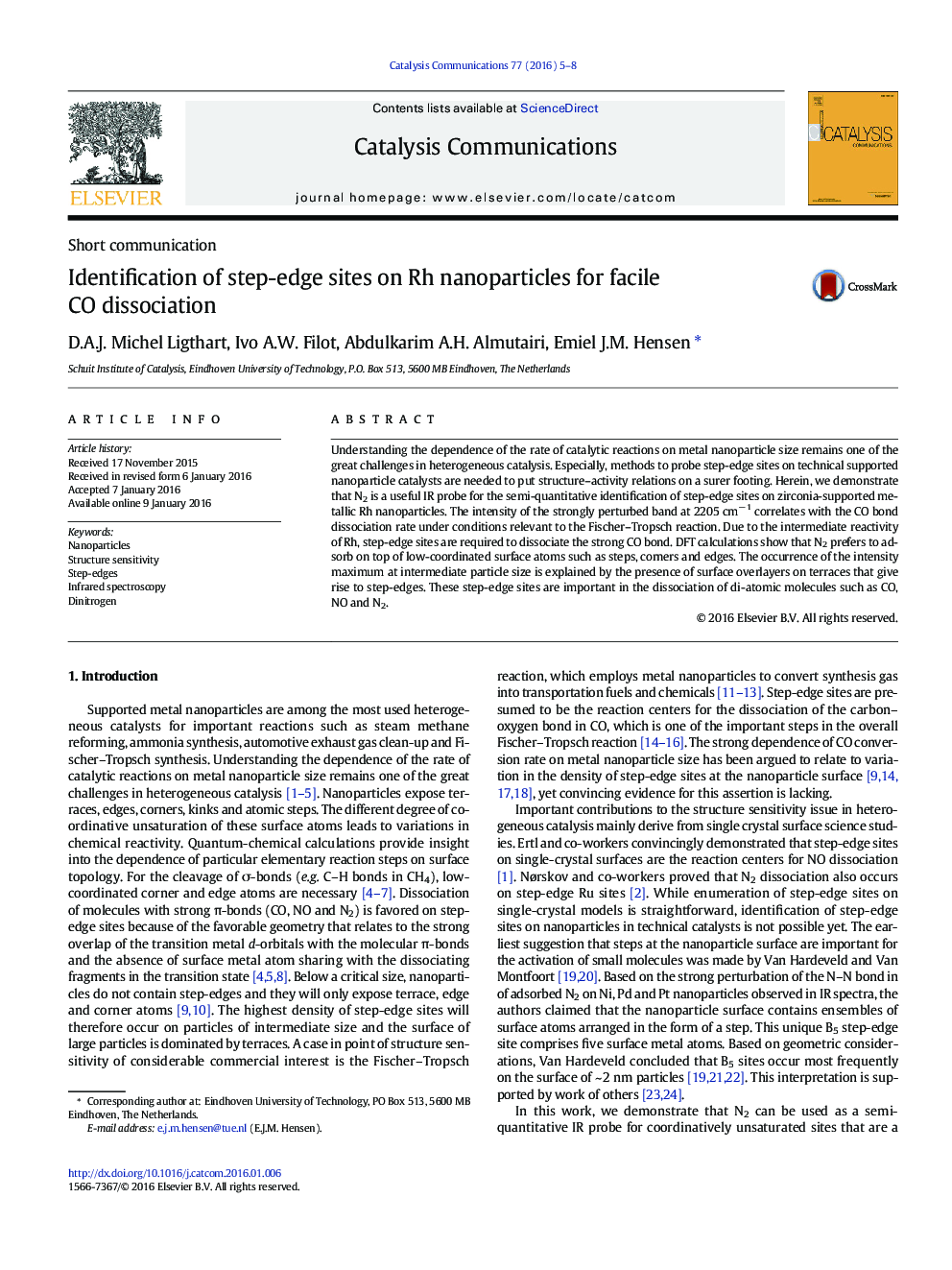| Article ID | Journal | Published Year | Pages | File Type |
|---|---|---|---|---|
| 49312 | Catalysis Communications | 2016 | 4 Pages |
•N2 IR probes low-coordinated surface metal atoms on Rh nanoparticles.•The density of low-coordinated atoms correlates with the CO dissociate rate.•Maximum density and CO dissociation rate at intermediate particle size•N2 IR is useful to semi-quantitatively probe step-edge sites.
Understanding the dependence of the rate of catalytic reactions on metal nanoparticle size remains one of the great challenges in heterogeneous catalysis. Especially, methods to probe step-edge sites on technical supported nanoparticle catalysts are needed to put structure–activity relations on a surer footing. Herein, we demonstrate that N2 is a useful IR probe for the semi-quantitative identification of step-edge sites on zirconia-supported metallic Rh nanoparticles. The intensity of the strongly perturbed band at 2205 cm− 1 correlates with the CO bond dissociation rate under conditions relevant to the Fischer–Tropsch reaction. Due to the intermediate reactivity of Rh, step-edge sites are required to dissociate the strong CO bond. DFT calculations show that N2 prefers to adsorb on top of low-coordinated surface atoms such as steps, corners and edges. The occurrence of the intensity maximum at intermediate particle size is explained by the presence of surface overlayers on terraces that give rise to step-edges. These step-edge sites are important in the dissociation of di-atomic molecules such as CO, NO and N2.
Graphical abstractFigure optionsDownload full-size imageDownload as PowerPoint slide
